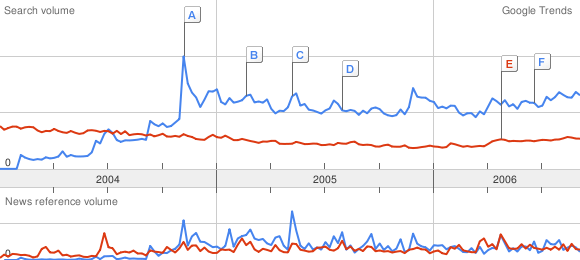Ross Mayfield, the otherwise astute CEO of Social Text has chosen to give away his enterprise wiki code for free. Another of a long line of businesses to choose the Open Source route. In a world of proprietary commercial software vendors, where copyright is the default, why are these companies giving away their software?
Folly or Genius?
Firstly, use of the open source (OS) software comes with certain obligations. Under the one of the more common licences used, COMMON DEVELOPMENT AND DISTRIBUTION LICENSE (CDDL), when using the OS software you are obliged to:
- Redistribute any modified code in turn, under the same licence as the original code
- You may consume but not resell, i.e. you may not exploit the whole or part of the software commercially
Open sourcing companies benefit by:
1. Sharing development cost The open source development model, responsible for creating software like Linux, has proven to be very efficient. Eric Raymond, who helped Netscape exploit open source development in its fight against Microsoft, has documented how and why distributed development produces such quality results in his Cathedral and the Bazaar.
2. Marketing Open source promotes better communications with clients, more customer awareness and faster adoption. Like Linux or Apache (web server) software, if the application is better than other software, word of mouth marketing can provide a dominant maket position.
The question for businesses is whether the remainder of their value-added to their customers and their value chain will generate an adequate return on investment. Open Source business models leverage many different types of value-added. For example:
Dual Licence Business Model, consists in providing a fee based licence for commercial use of the software. MySQL AB is a leading example of this business model. The ease with which MySQL clients can develop, test and prototype is an obvious advantage of the dual license.
Service Business Model, consists in providing the software for free, and charging for consultancy and service for implementation and maintenance. Although the Open Source community is becoming more corporate friendly in its responsiveness and support, dedicated commercial support has definate value-added to many clients. In fact, many companies work just by providing integration, implementation and maintenance services for popular Open Source software like MySql, Apache, JBoss, Tomcat, Eclipse.
No Guarantees
Open Sourcing does not guarantee success though. Larry McVoy, a long time Open Source activist and key contributor to Linux, had to widthdraw the open source license on future developments of his widely used Bitkeeper code-control software. He stated that
“Open source as a business model, in isolation, is pretty much unsustainable. We believe if we open sourced our product, we would be out of business in six months. The bottom line is you have to build a financially sound company with a well-trained staff. And those staffers like their salaries. If everything is free, how can I make enough money to keep building that product for you and supporting you?”
Strong Vision
Using Open Source Model can provide great leverage, but it places a lot of pressure on management. Success requires a very clear vision of the core value-added of the company relative to its customers and suppliers.







